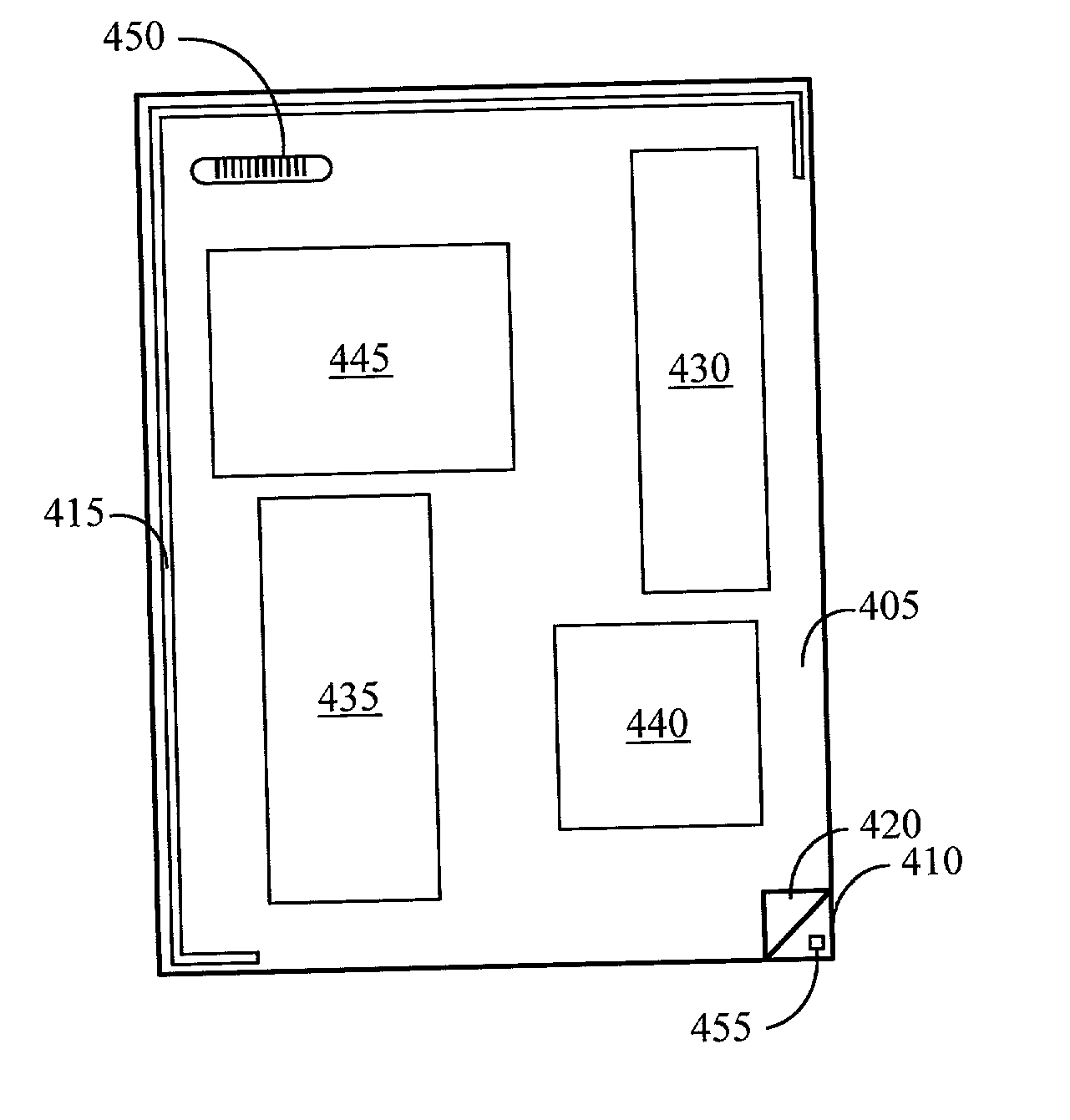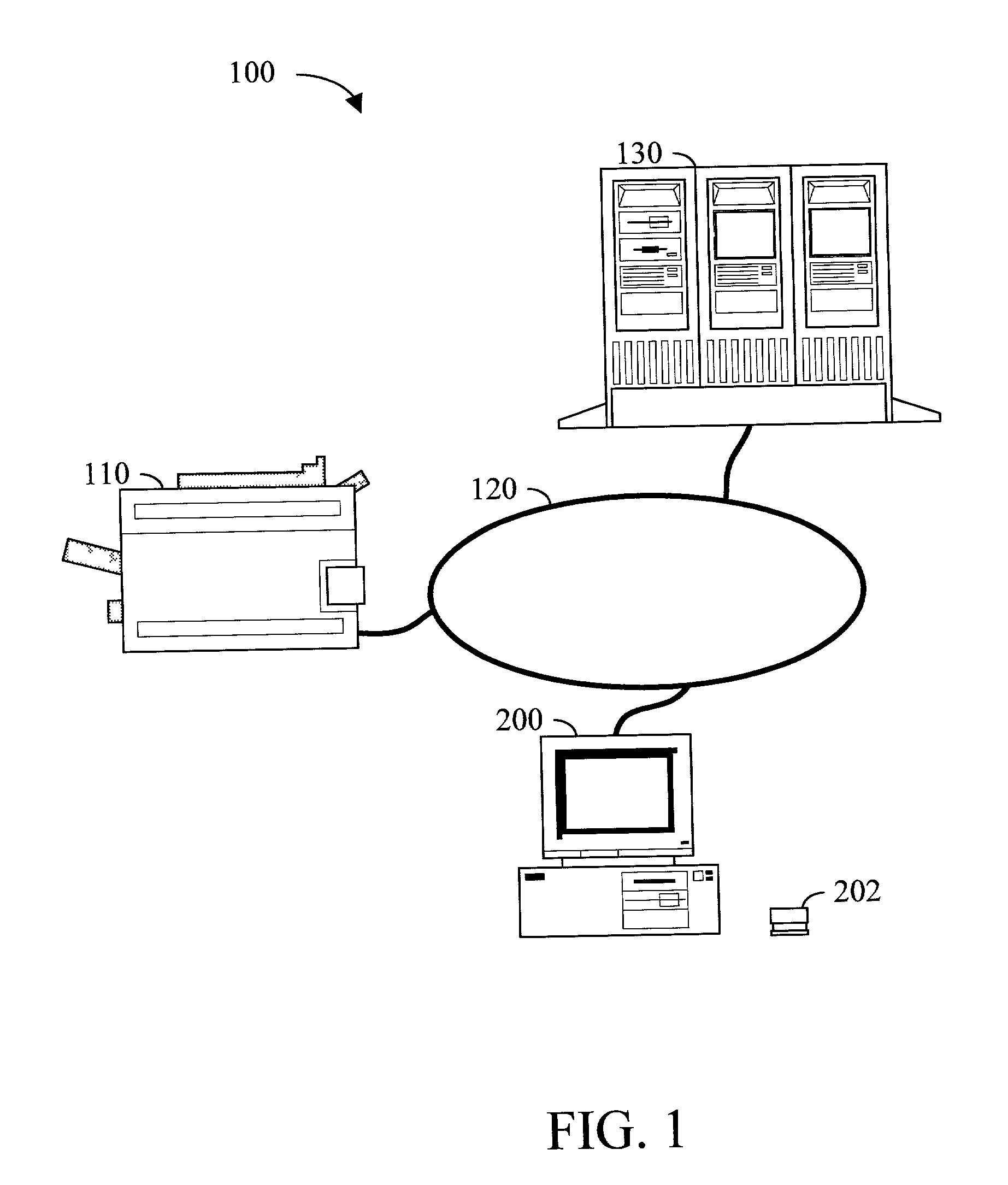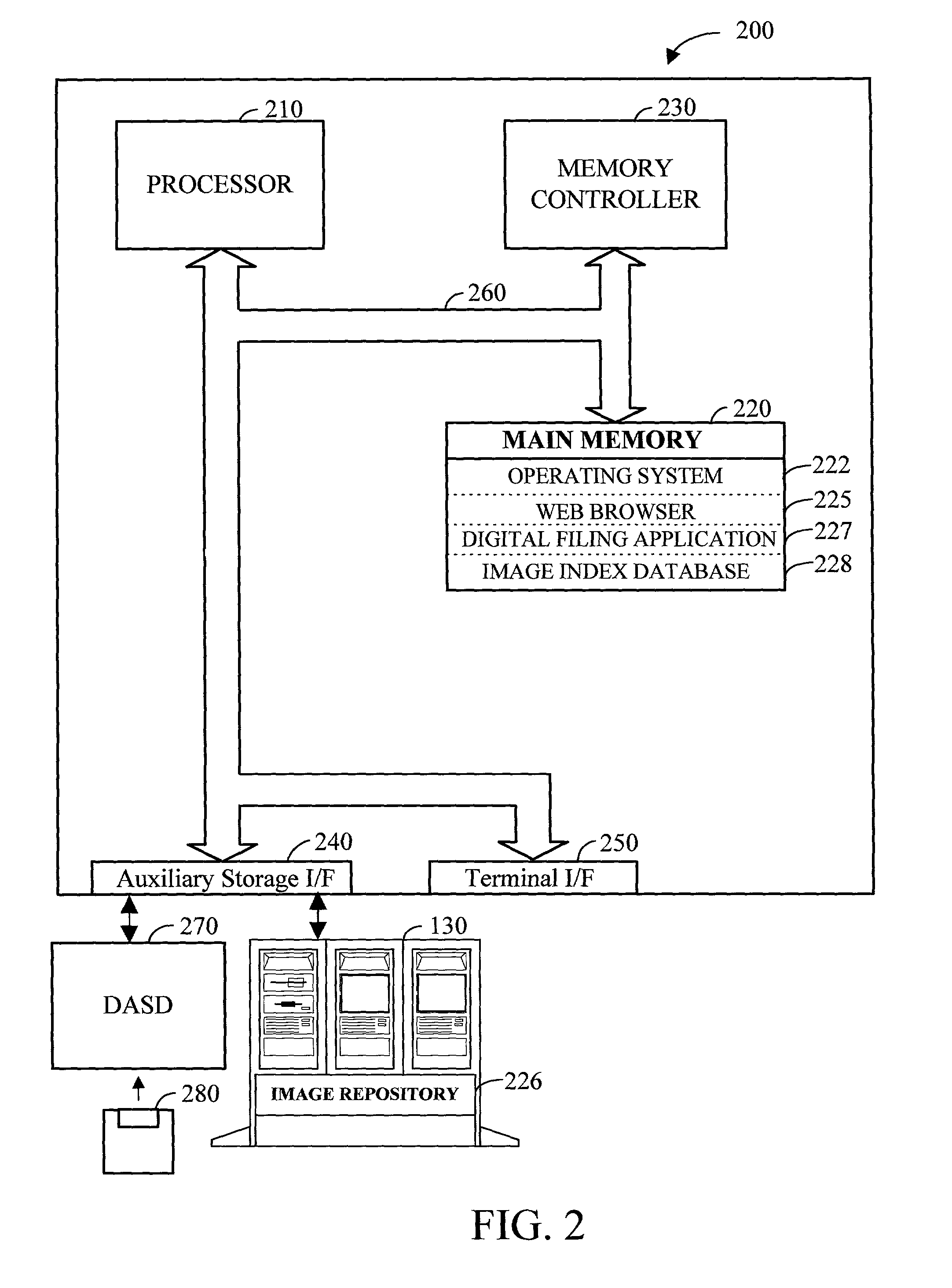Apparatus and method for creating images of small documents
a technology for creating images and documents, applied in image data processing, document management systems, instruments, etc., can solve the problems of large paper burden in a given organization, large document storage overhead, and inability to achieve widespread acceptance, and achieve the effect of simple and efficien
- Summary
- Abstract
- Description
- Claims
- Application Information
AI Technical Summary
Benefits of technology
Problems solved by technology
Method used
Image
Examples
Embodiment Construction
[0021] Referring now to FIG. 1, a digital filing system 100 suitable for use in conjunction with a document holder in accordance with a preferred embodiment of the present invention includes: a computer 200; a desktop label dispenser 202; an optional folding out basket 203; a document input mechanism 110; an image storage mechanism 130; and a communication link 120. Taken together, digital filing system 100 provides a way for office workers to index, store, and manage paper-based documents, regardless of their origin.
[0022] Desktop label dispenser 202 is a specialized device which is capable of dispensing pre-printed labels that will typically include a computer readable globally unique identifier and / or bar code along with corresponding human-readable information (i.e., eye-legible content). The globally unique identifiers, which in the most preferred embodiment are pre-printed on labels contained in desktop label dispenser 202, may be implemented as bar codes that conform to some ...
PUM
 Login to View More
Login to View More Abstract
Description
Claims
Application Information
 Login to View More
Login to View More - R&D
- Intellectual Property
- Life Sciences
- Materials
- Tech Scout
- Unparalleled Data Quality
- Higher Quality Content
- 60% Fewer Hallucinations
Browse by: Latest US Patents, China's latest patents, Technical Efficacy Thesaurus, Application Domain, Technology Topic, Popular Technical Reports.
© 2025 PatSnap. All rights reserved.Legal|Privacy policy|Modern Slavery Act Transparency Statement|Sitemap|About US| Contact US: help@patsnap.com



